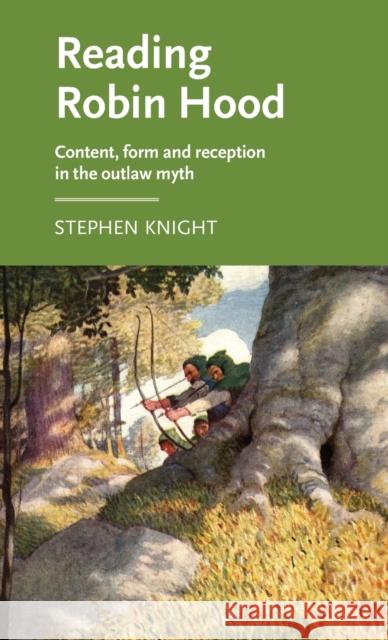Reading Robin Hood: Content, Form and Reception in the Outlaw Myth » książka
Reading Robin Hood: Content, Form and Reception in the Outlaw Myth
ISBN-13: 9780719095269 / Angielski / Twarda / 2015 / 296 str.
Reading Robin Hood: Content, Form and Reception in the Outlaw Myth
ISBN-13: 9780719095269 / Angielski / Twarda / 2015 / 296 str.
(netto: 413,10 VAT: 5%)
Najniższa cena z 30 dni: 431,97
ok. 30 dni roboczych
Dostawa w 2026 r.
Darmowa dostawa!
Reading Robin Hood explores and explains stories about the mythic outlaw - a figure who always represents the values of natural law and stands up for true justice - from the middle ages to the present.
While a few books have described the outlaw myth, usually in its earlier forms, and occasional academic essays have commented on elements of the Robin Hood story, this is the first in-depth analysis of the whole sequence and the varying elements of the adventures of Robin Hood. First, it explores the medieval tradition from early poems into the long-surviving sung ballads - and also two major early developments, the Scottish version of the outlaw hero, here called Rabbie Hood, and then around 1600 the gentrified Robin, the exiled Earl of Huntington, created by socially aspirational writers and partnered by Lady Marian.
Medievalism passed into memory, and early nineteenth-century Romantic authors, followed by novelists, re-imagined Robin, as strongly involved with nature, deeply in love with Marian, definitely English, not Norman or French, and representing in the time of reform the rights of the ordinary man. That fitted Robin for the modern world, but he did not stop developing.
In film, he has stood up for international Western values - even those of a crusader - and the modern Marian plays a much more substantial role: here for the first time she has a chapter to herself. The multiple Robin Hood myth flourishes, continuously producing new forms for the hero's story, and new understandings of his meaning.











